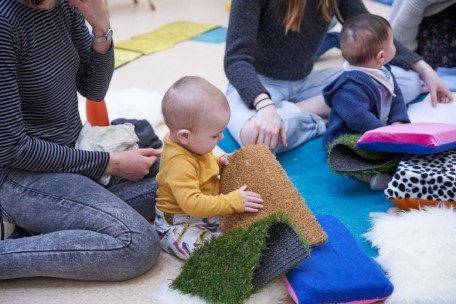With Easter in mind – though in the current cold weather it feels more like Christmas, only without the mince pies, carols and good cheer – this week I’ve chosen Martin Schongauer’s beautiful engraving of The Resurrection of Christ. It comes from roughly the same time and place as last week’s Christ on a Donkey, although intended for a more exclusive audience. Schongauer (1430-1491) worked in Colmar (now in France but then in the Germanic lands), and was the first great master of engraving. Printmaking evolved in Germany in the first half of the fifteenth century, a result of the growth of paper production in our period. The first prints were in the relatively simple and inexpensive form of woodcut, a process that involves cutting the design from a wooden block so that the outlines stand proud from the wooden block (think potato prints); the block is then inked, paper is laid over it, and the whole is put under the press to produce the print. Engraving, by contrast, involves cutting the design with a needle-like burin into a copper plate, a process that permits lines of greater finesse than woodcut. Engraving developed around the middle of the century, also in Germany, perhaps inspired by the decorative techniques of goldsmiths; it’s no coincidence that Schongauer came from a family of goldsmiths, although he was himself a practising painter.

Martin Schongauer, “The Resurrection”, Colmar, 1479-1480, Engraving on laid paper. Prints & Drawings Study Room, level F, case TOPIC, shelf 6, box B, Mus Ref: E.757-1940 © Victoria and Albert Museum, London
Printmaking evolved at a time of increased demand for images, both devotional and secular, amongst the urban classes. Printed images on paper were to some extent inexpensive alternatives to paintings, although the comparative cost of producing a print from a copper plate as opposed to a wooden block, as well as the greater visual refinement of engravings, gave engravings more cachet than woodcuts. Schongauer was one of the first artists to recognise their commercial potential. The Resurrection comes from a series of twelve engravings of The Passion of Christ, which could perhaps have been purchased as single sheets, or as the whole series, depending on one’s desires or one’s budget. We can imagine it was aimed at a prosperous middle-class audience, who would have appreciated the novelty of the art form, as well as its beauty. Evidence for the display of engravings at this period is scant, but given the size and format of Schongauer’s Passion (16.2 x 11.4 cm), it would have been possible to slip such prints into a prayer book – perhaps one of the printed books that were another innovation in this period.
While the simple black outlines of early woodcuts were often intended to be coloured in, reinforcing their role as inexpensive paintings, engravings were not. The beauty of Schongauer’s work lies in his mastery of black and white design – a familiar enough concept to us, but which would have looked very novel in the 1400s. Schongauer varies the intensity of the hatching, employing a staggering range of strokes from bold parallel lines to tiny hook-ended flecks, evoking naturalistic effects of depth, volume and texture; at the same time he pays great heed to the surface patterns of line and form. The clusters of drapery around Christ’s hips and the tassels on the shield of the guard at bottom right are miracles of design, the more astounding when one considers the technical challenge of creating such delicate yet precise lines by the arduous means of pushing a burin through a copper plate.
Schongauer, like other engravers of his day, signed his work with his monogram – an important indicator of authorship in an art form that was mass produced and widely circulated. Artists working in other media such as painting, wood and metalwork used his engravings as models. His fame was justly widespread. The sophistication of his work was unparalleled until the emergence of Albrecht Dürer (1471-1528), who was himself greatly indebted to Schongauer and an avowed admirer of his work. Aged twenty-one, Dürer visited Colmar in the hope of meeting Schongauer, only to discover that he had recently died. Around the same time in Florence, the teenage Michelangelo made a painted copy of Schongauer’s engraving of St Anthony tormented by Demons; in the mid sixteenth century Schongauer was among the few northern European artists mentioned in Vasari’s Lives of the Artists.
Schongauer’s Resurrection isn’t on display in the V&A, but you can request to see it in the Prints and Drawings Study Room on Level 4 of the Henry Cole Wing. You can also view some other fifteenth-century prints and see a video demonstration of woodcut technique in Room 64 of the Medieval and Renaissance Galleries.


